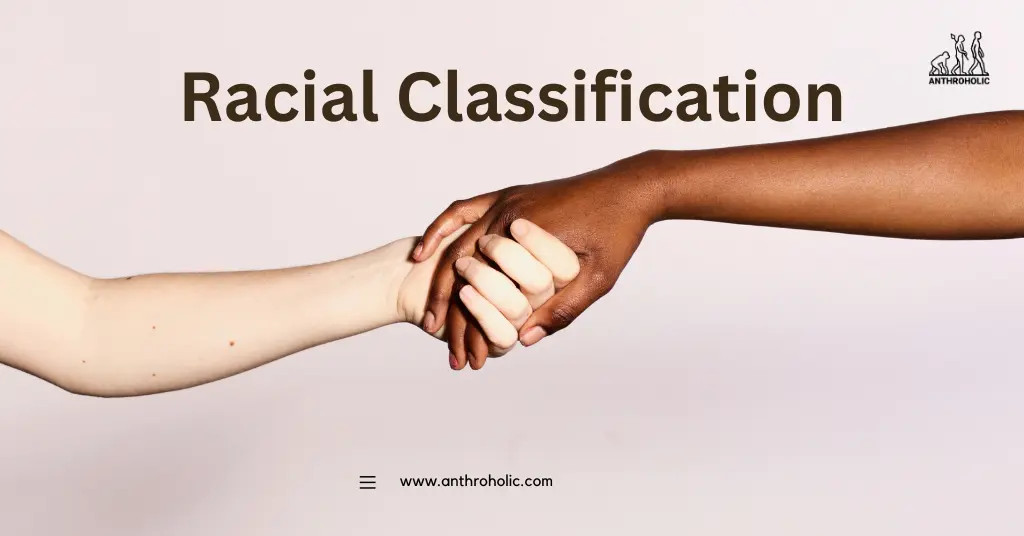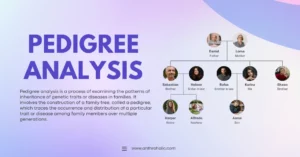AI Answer Evaluation Platform Live Now. Try Free Answer Evaluation Now
Criteria for Racial Classification
Racial classification refers to the categorization of humans into distinct groups based on inherited physical and genetic characteristics. It is a controversial and complicated topic due to the immense genetic diversity and cultural intermingling among humans worldwide.

Historical Context
Racial classification has been practiced for centuries, often reflecting societal structures and biases rather than scientific reasoning [1]. During the 18th and 19th centuries, scholars like Carl Linnaeus and Johann Friedrich Blumenbach proposed various criteria for classification, usually based on superficial physical characteristics and geographical origin [2].
Physical Characteristics
Physical characteristics have been the most commonly used criteria in historical racial classification. They include:
- Skin color: Different shades from very light to very dark were used as a primary distinguishing factor.
- Hair type: From straight to wavy to tightly coiled.
- Facial features: Including the shape and size of the nose, eyes, and lips.
- Body structure: Including height, body shape, and size of limbs.
| Physical Characteristics | Example Racial Group |
|---|---|
| Light skin, straight hair | Caucasoid |
| Dark skin, coiled hair | Negroid |
| Light skin, straight hair, almond-shaped eyes | Mongoloid |
Table 1: Historical Racial Classification Based on Physical Characteristics
Geographic Origin
Geographic origin was another cornerstone of historical racial classification, often linking physical characteristics to specific geographical regions. For example, the ‘Mongoloid’ race was associated with East Asia, ‘Caucasoid’ with Europe, and ‘Negroid’ with Africa.
Genetic Factors
Modern science uses genetic markers as a more accurate and nuanced way of classifying human diversity. The Human Genome Project has revealed that humans share approximately 99.9% of their DNA, emphasizing the superficiality of racial divisions based on physical characteristics [3]. Nevertheless, specific genetic variations can cluster within geographic regions, allowing for some level of population differentiation.
The Socio-Cultural Construct
Race is often viewed as a socio-cultural construct, with the United Nations Educational, Scientific and Cultural Organization (UNESCO) declaring that “All human beings belong to a single species and are descended from a common stock” [4]. According to this perspective, racial categorizations are shaped more by societal norms, prejudice, and historical context than by biological or genetic distinctions.
Bio-Geographical Ancestry
Recently, the term “bio-geographical ancestry” has been adopted to replace race in scientific contexts. This refers to an individual’s likely geographical origin based on specific genetic markers. It moves away from broad racial categories, instead focusing on more specific regional differentiation. Bio-geographical ancestry provides a more detailed and scientifically accurate picture of human genetic variation.
Racial Classification in Biomedicine
Biomedical research often uses racial classification as a way to identify health patterns and susceptibilities to specific diseases among different populations. For example, certain genetic disorders, such as sickle cell anemia, are more prevalent in specific populations.
However, using race in this context is controversial and can potentially lead to race-based medicine, which might overlook the individual’s health needs. Critics argue that social, environmental, and lifestyle factors often have a more significant impact on health than race.
Racial Classification in Forensic Science
Forensic scientists often use a combination of physical, genetic, and bio-geographical ancestry data to estimate an unidentified individual’s race. Such estimates can help in the identification process, especially in missing persons cases. However, these are estimations and not definitive indicators of a person’s race or ethnicity.
Racial Self-Identification
Today, racial classification is often a matter of self-identification. Census forms worldwide allow individuals to choose their race or ethnicity from a list or to write it in themselves. This reflects the modern understanding of race as a complex interplay of genetics, culture, and personal identification.
| Country | Example of Racial Classification |
|---|---|
| United States | White, Black or African American, Asian, Native Hawaiian or Other Pacific Islander, American Indian or Alaska Native |
| Brazil | Branco (White), Preto (Black), Pardo (Brown), Amarelo (Yellow), Indígena (Indigenous) |
Table 2: Examples of Racial Classification in Census Forms
The Debate Surrounding Racial Classification
There is ongoing debate about the validity and usefulness of racial classification. Critics argue that:
- It is unscientific: Most genetic variation in humans exists within, not between, racial groups.
- It can be misleading: Simplified racial categories can obscure the immense diversity within groups.
- It can perpetuate stereotypes and racism: Classification can reinforce harmful biases and discrimination.
Conclusion
Racial classification, whether based on physical characteristics, geographical origin, genetic factors, or socio-cultural constructs, remains a contentious issue. A balance must be found between recognizing human diversity and avoiding the perpetuation of harmful stereotypes. Modern science and societal awareness are evolving, aiming for a more nuanced understanding of human identity and the idea of race.
References
[1] M. Yudell et al., “Taking race out of human genetics”, Science, vol. 351, no. 6273, pp. 564-565, 2016.
[2] M. Banton, Racial Theories, Cambridge University Press, Cambridge, 1987.
[3] E. S. Lander et al., “Initial sequencing and analysis of the human genome”, Nature, vol. 409, no. 6822, pp. 860-921, 2001.
[4] UNESCO, The Race Concept: Results of an Inquiry, Paris, 1952.




